“Hard to believe Buenos Aires had any beginning,” wrote Borges; “I feel it to be as eternal as air”
And so it was when I visited in June 2015 with my friend Rosalyn, staying in a fabulous art deco apartment in Retiro. Buenos Aires is one of Latin America’s greatest literary cities with more booksellers per capita than any other city in the world. It also is home to the famous El Ateneo Grand Splendid, one of the most beautiful bookstores in the world and the biggest in South America and it is home to the author of some of the 20th-century literature’s finest original works.
Almost 30 years after his death, I was interested in tracking down Jean Luis Borges and was spurred on by the blogs, Finding Borges by Pat Gillespie and Follow in the footsteps of Borges from Turismo Buenos Aires. – two well researched resources.
He was seeking a soul worthy of participating in the universe
But the first thing to do was to pronounce his name correctly. As pointed out by our well informed driver, Andreas, (who knew a thing or two about Borges), you say BOR and as you approach the R move down deep into your throat as though clearing it, for the RG and round it out with a breathy ES, and there you have the local pronunciation of BORGES.
SOME OTHER TIME
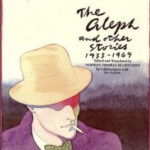 Born in 1899 in Buenos Aires, Jorge Luis Borges wrote short stories, poems, essays, articles and translations. He was fascinated by labyrinths, reflections, time and space, something which was reflected in many of his mesmerizing, postmodernist stories, and after each day’s journey I returned again to The Aleph.
Born in 1899 in Buenos Aires, Jorge Luis Borges wrote short stories, poems, essays, articles and translations. He was fascinated by labyrinths, reflections, time and space, something which was reflected in many of his mesmerizing, postmodernist stories, and after each day’s journey I returned again to The Aleph.
The Aleph’s diameter was probably little more than an inch, but all space was there, actual and undiminished. Each thing (a mirror’s face, let us say) was infinite things, since I distinctly saw it from every angle of the universe
Borges was almost unknown in most of the world until 1961 in his early sixties, when he was jointly awarded the International Publishers Prize with Irish playwright Samuel Beckett.
Writer and essayist and Nobel Prize winner, J. M. Coetzee said of him: “He, more than anyone, renovated the language of fiction.” Rereading him each night, I was again in awe of his boldness and gobsmacked continually by his perfect choice of adjectives and verbs, by the wonderful intelligence, the flashiness and the tightness of his work.
Across the park from our apartment in Retiro, off Plaza San Martin, I found the Torquato Regina Bar Bistro, located around the corner from Borges’s apartment at 6B, Maipu 994, where he lived intermittently for 40 years until his death in 1986. As I worked on my own novel, I imagined him nearby, as in years before.
God moves the player, he in turn, the piece. / But what god beyond God begins the round / of dust and time and sleep and agonies?
I sought out Borges’s ‘second home’ La Ciudad bookstore a little further down Maipu (971) in the Galeria del Este but sadly it closed a few years before I arrived. According to his longtime girlfriend and assistant, the writer Maria Esther Vazquez, Borges fell in love often and, despite being married to Maria Kodama at the time of writing the poem Al olvidar un sueno (On forgetting a dream) in 1981, he dedicated it to Viviana Aguilar who worked at La Ciudad bookstore where he went every day to write and read. Although it was closed, we could see through the glass walls and climb the external ornate staircase to imagine books on the empty shelves and Borges sitting at the now dusty desk.
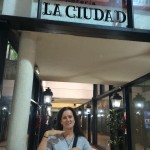
SHOPPING MALL MUSEUM
One morning as Andres exchanged our American dollars for the local currency, (better rates than the banks and risk free compared to walking the Florida ‘cambio’ trail) he suggested the Centro Cultural Borges in the Galerias Pacifico mall. Sparse and located in a Shopping Mall, it was underwhelming, but being the next best thing to a sadly absent museum for Borges in Buenos Aries, I gave the room dedicated to his life and work a respectful inspection.
A few original pages of the transcript from The Aleph, some of his famous quotes across the white plaster walls and the framed front page of La Nacion newspaper from the day Borges died. Helpful was a list of places where Borges had lived, worked or frequented in Buenos along with interesting facts, original publications of his work and signed inscriptions.
ON THE STREET WHERE YOU LIVED
From the time I was a boy,” Borges noted, “it was tacitly understood that I had to fulfill the literary destiny that circumstances had denied my father.
Borges was born in an apartment at Tucuman 838, but spent his childhood at his grandparents house in Palermo at Serrano 2135, a street that is now named in his honor. Under his grandmothers instruction, he learned to read in English before he could read Spanish and early reading lists included Robert Louis Stevenson, H G Wells, Edgar Allan Poe and Henry Wadsworth Longfellow.
If I were asked to name the chief event in my life, I should say my father’s library
Aged nine, his own Spanish translation of Oscar Wilde’s ‘The Happy Prince‘ was published in a Buenos Aires newspaper. His poem Fundación mítica de Buenos Aires, from the book Fervor de Buenos Aires, pinpoints Palermo as the birthplace of the city, but today the neighborhood is the nightlife centre for writers, artists, filmmakers and 24 hour party people.
THE LIBRARY OF BABEL
I have always imagined that Paradise will be a kind of library
Top of my Borges list was the former Ancient National Library, now the National Center of Music at Mexico 564 in the San Telmo neighbourhood, where Borges served as its director from 1955 to 1973. Shortly after his appointment he began losing his sight and The librarian who narrates The Library of Babel references this condition: “Now that my eyes can hardly make out what I myself have written, I am preparing to die…”
It was during his time as director that Borges met daily with his English translator, Norman Thomas di Giovanni who embarked on a process not so much of translation but of – in Borges’s words – “re-creation” of his works in English” where “We think we are really one mind at work.” Their relationship is explored and honored in this fascinating article, on the author and translator, by Australian Richard Flanagan, Writing with Borges.
Although the library is now a music school the auditorium is a stark reminder, with its empty shelves and the rotunda around which it was said that occasionally, when Borges wanted to think, he would leave his office and slowly circle high above the readers at the tables below.
TWO SOULS DON’T FIND EACH OTHER BY SIMPLE ACCIDENT
My friend Ron, who had joined us as he toured South America, gave me the courage to be bold and achieve my aim: to sit at the desk where Borges had worked and wrote over 50 years ago.
Upon approaching the front desk it soon became apparent this was not going to be easy as the security woman informed us that the office was now home to the director of the National Center of Music and not open to visitors. Despite the language barrier, we exchanged a few friendly, but shoulder shrugging, minutes until she looked past my sad face towards a man briskly walking in with a newspaper under his arm. El director was in the house.
Ron had bonded with the security woman and by now she was on team Helen. After a few minutes of them gesticulating upstairs and nods towards us, we didn’t need a translator when the director walked towards the stairs and smiling back over his shoulder called to us, ‘Ven conmigo‘
He invited me to sit at Borges’s desk. I look back now at the diary that sat on his desk to discover what I wrote at such an auspicious moment. ‘Holy Shit. I am in the room, at the desk, on the chair, of Borges!! 11.6.15’
Which of us is writing this page, I don’t know. * see below at end
Next door to the library, is the former headquarters of the Argentine Society of Writers, where Borges sometimes offered public readings. Now a restaurant, El Historico, the main dining room features a metal plaque listing the society’s board of directors including Jorge Luis Borges.
Man, the imperfect librarian, may be the product of chance or of malevolent demiurgi; the universe, with its elegant endowment of shelves, of enigmatic volumes, of inexhaustible stairways for the traveler and latrines for the seated librarian, can only be the work of a god.
THE LIBRARY IN HIS WORK
In the short story The Library of Babel, Borges imagined the universe as a boundless library of adjacent, hexagonal rooms containing every possible book that could ever exist. He wrote that ‘all men should juggle letters and symbols until they constructed, by an improbable gift of chance, these canonical books.‘ The National Library, with its four-story octagonal structure whose columns are engraved with the names of great writers and thinkers like Shakespeare, Goethe and Plato, obviously influenced the architecture of both the book and his imagination.
Similarly, El libro de arena (The Sand Book), references his life and places where he lived and worked. Toward the end, the narrator refers to a book with infinite pages, ‘that was a nightmarish object, an obscene thing that affronted and tainted reality itself’ and produced conflicting emotions, such a fear of having it and a fear of losing it. The narrator eventually hides and consequently loses the book on ‘one of the basement’s musty shelves of the National Library.’
Both these stories display Borges affection for mathematics which is explored by the author William Goldbloom Bloch, in The Unimaginable Mathematics of Borges’ Library of Babel, an intriguing tour of the mathematical ideas hidden within The Library of Babel.
Our destiny, is not horrible because of its unreality; it is horrible because it is irreversible and ironbound. Time is the substance I am made of. Time is a river that carries me away, but I am the river; it is a tiger that mangles me, but I am the tiger; it is a fire that consumes me, but I am the fire. The world, alas, is real; I, alas, am Borges.
COFFEE AND CAKE WITH BORGES AND FRIENDS
 Borges was a regular visitor to Gran Café Tortoni at 825 Avenida de Mayo, a meeting place since 1858 for some of Latin America’s most celebrated intellectuals, artists and politicians. Now it’s only us, the tourists.
Borges was a regular visitor to Gran Café Tortoni at 825 Avenida de Mayo, a meeting place since 1858 for some of Latin America’s most celebrated intellectuals, artists and politicians. Now it’s only us, the tourists.
Sitting at green marble tables under Tiffany glass ceilings in the oak panelled dining room, every wall and nook is covered with souvenirs including signed framed photographs and original artworks. The food is expensive and our budget tight, so after ordering cake and coffee we wandered the cafe fascinated by the memorabilia and the draw card in the back right hand corner.
Somewhat vulgar but utterly compelling are the life size wax figures of Borges (looking desperately sad) with tango singing and acting sensation Carlos Gardel and feminist writer Alfonsina Storni. Being the tourist, I held a copy of The Aleph for the compulsory and corny shot of Borges and I, and since discovering Storni in Cafe Gran Tortino, I have become a fan of one of the most important Argentine and Latin-American poets of the modernist period – maybe I will track her next visit to Buenos Aires – she deserves that much.
THE ART OF FRIENDSHIP
When we decided to visit the Gallery of Xul Solar, at Laprida 1212, I didn’t realise it was the home and now gallery of Borges’ most fascinating and influential friend, the painter and poet Alejandro Schulz Solari, whom Borges once called “our William Blake.”
Using the artistic name Xul Solar, he shared Borges’ fondness for inventing imaginary universes, languages and other worldly people. With over 100 paintings and created objects, a tour through the gallery of utopias, mythologies, heavens and hells is testament to the symbiotic relationship between them. They were collaborators, with Xul Solar providing illustrations for books that Borges wrote and magazines he edited and the influence of the artist on the writer is evident in many Borges’ stories.
The 2013 exhibition Xul Solar and Jorge Luis Borges: The Art of Friendship, organized by Americas Society with the collaboration of Museo Xul Solar in Buenos Aires, explored the intellectual nature of the relationship between Solar and Borges and the definition of a private but public friendship and its impact on Argentine art and culture.
INFLUENCED BY BORGES
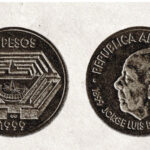
The Central Bank of Argentina marked the centennial of Jorge Luis Borges’ birth, (August 24, 1899 in Buenos Aires), by issuing coins to commemorate that “his sublime literary quality made him a candidate to the Nobel Prize in Literature, awardee of many international prizes and constant publication of his works.”
In 1975, US author John Updike wrote that Borges’ “driest paragraph is somehow compelling. His fables are written from a height of intelligence less rare in philosophy and physics than in fiction,” Updike said. “Furthermore, he is, at least for anyone whose taste runs to puzzles or pure speculation, delightfully entertaining. For all his modesty and reasonableness of tone, he proposes some sort of essential revision in literature itself.”
When A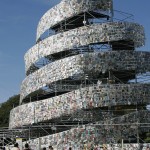 rgentinian artist, Marta Minujín was commissioned to celebrate Buenos Aires being chosen as the UNESCO 2011 World Book Capital, she devised the ‘Tower of Babel,‘ a 82 foot high structure covered in over 30,000 books from around the world. Upon dismantling the structure, the books formed the basis of a new book archive called the “Library of Babel,” a tribute to Borges.
rgentinian artist, Marta Minujín was commissioned to celebrate Buenos Aires being chosen as the UNESCO 2011 World Book Capital, she devised the ‘Tower of Babel,‘ a 82 foot high structure covered in over 30,000 books from around the world. Upon dismantling the structure, the books formed the basis of a new book archive called the “Library of Babel,” a tribute to Borges.
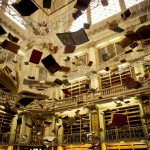 French artist Christian Boltanski paid tribute to Borges at the former National Library with his ͞2012 exhibit Flying Books, where he suspended hundreds of opened books from the ceiling to restore the presence of a library. The work deals with the memory of the building and Jorge Luis Borges’ recurring idea that the Library is the memory of humanity and that the books are steeped in the past.
French artist Christian Boltanski paid tribute to Borges at the former National Library with his ͞2012 exhibit Flying Books, where he suspended hundreds of opened books from the ceiling to restore the presence of a library. The work deals with the memory of the building and Jorge Luis Borges’ recurring idea that the Library is the memory of humanity and that the books are steeped in the past.
 An extraordinary tribute to Borges’ The Library of Babel is a virtual and universal library created by writer and programmer, Jonathan Basile, that contains every possible combination of 1,312,000 characters, including lower case letters, space, comma, and period, thus every book that has ever been written and every piece of writing that could ever be. “You can search for your name, a date in the future a passage from your favorite book or if you have writers block can search for sentence fragment you have written and see how it ends.” Warning: It’s easy to get lost in the Library of Babel.
An extraordinary tribute to Borges’ The Library of Babel is a virtual and universal library created by writer and programmer, Jonathan Basile, that contains every possible combination of 1,312,000 characters, including lower case letters, space, comma, and period, thus every book that has ever been written and every piece of writing that could ever be. “You can search for your name, a date in the future a passage from your favorite book or if you have writers block can search for sentence fragment you have written and see how it ends.” Warning: It’s easy to get lost in the Library of Babel.
A maze is a house built purposely to confuse men; its architecture, prodigal in symmetries, is made to serve that purpose.
 Honouring Borge’s fascination for labyrinths, admirers have built garden mazes in his tribute, the most impressive being in Italy. The Masone Labyrinth in Fontanellato, near Parma was created with over 200,000 bamboo plants, by Italian publisher, bibliophile and art collector Franco Maria Ricci, in honour of his friend and like him sees mazes as symbolic of the human condition.
Honouring Borge’s fascination for labyrinths, admirers have built garden mazes in his tribute, the most impressive being in Italy. The Masone Labyrinth in Fontanellato, near Parma was created with over 200,000 bamboo plants, by Italian publisher, bibliophile and art collector Franco Maria Ricci, in honour of his friend and like him sees mazes as symbolic of the human condition.
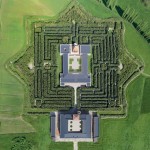 The Borges Labyrinth situated in Venice’s Island of San Giorgio Maggiore, was built by the Cini Foundation from a design created by British architect Randoll Coate using over 3,200 box trees. Opened in 2011 to mark the 25th anniversary of Borges’ death, it is a homage to the themes of his work and although its impossible to get lost, the labyrinth is a symbol of loss and abandonment.
The Borges Labyrinth situated in Venice’s Island of San Giorgio Maggiore, was built by the Cini Foundation from a design created by British architect Randoll Coate using over 3,200 box trees. Opened in 2011 to mark the 25th anniversary of Borges’ death, it is a homage to the themes of his work and although its impossible to get lost, the labyrinth is a symbol of loss and abandonment.
If we read an old book it is as if we read all the time that has elapsed since the day it was written and us.
LA BIELA
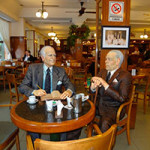 La Biela, (600 Avenida Quintana), in the Recoleta district was christened by a drunk drag racer after his biela (a rod that connects the pistons to the crankshaft) gave out in front of the cafe, it has become a hub for racing car aficionados and drivers with the wall covered in classic automotive paraphernalia.
La Biela, (600 Avenida Quintana), in the Recoleta district was christened by a drunk drag racer after his biela (a rod that connects the pistons to the crankshaft) gave out in front of the cafe, it has become a hub for racing car aficionados and drivers with the wall covered in classic automotive paraphernalia.
Borges was such a frequent visitor, with his artist and literary friends, that he had his own permanent table where he still sits to this day, albeit as bronze figure sitting with Bioy Casares as a tribute to the conversations these two great writers must have had about their extensive literary collaborations including Two Memorable Fantasies, Short and Amazing Stories and The Book of Heaven and Hell.
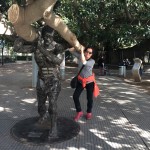 My friend and I enjoyed a wine and cheese platter outside La Biela on a sunny day outside under the massive El “Gran Gomero,” a rubber tree planted 200 years ago by the monks of Recoleta. Considered one of the oldest planted rubber trees in Buenos Aires it has a 50 metre crown and branches so large that unique supports have been placed underneath to prevent them from breaking.
My friend and I enjoyed a wine and cheese platter outside La Biela on a sunny day outside under the massive El “Gran Gomero,” a rubber tree planted 200 years ago by the monks of Recoleta. Considered one of the oldest planted rubber trees in Buenos Aires it has a 50 metre crown and branches so large that unique supports have been placed underneath to prevent them from breaking.
Borges died on June 14 1986 and is buried in the Cimetière des Rois, Geneva, with inscriptions in Old Norse, Spanish and “And ne forhtedon na” which is Old English for ‘Be not afraid.’
RECOLETA CEMETARY
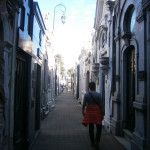
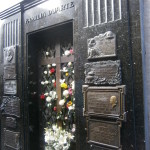 Casares, however, is interred across the road from La Biela in the Recoleta Cemetary, containing the graves of notable people, including Eva Peron, and is listed as one of the ten most beautiful cemeteries in the world. I agree. Rosalyn and I took our friend Ron for a visit (we had been before) and found the streets of statues, crypts and marble mausoleums just as impressive and intriguing the second time round. Obviously the rich and powerful of the city lived and rested for eternity in style with an extravagant range of Gothic chapels, Greek temples, ornate grottoes and elegant miniature houses – some pristine and others downright creepy. It’s a major tourist attraction
Casares, however, is interred across the road from La Biela in the Recoleta Cemetary, containing the graves of notable people, including Eva Peron, and is listed as one of the ten most beautiful cemeteries in the world. I agree. Rosalyn and I took our friend Ron for a visit (we had been before) and found the streets of statues, crypts and marble mausoleums just as impressive and intriguing the second time round. Obviously the rich and powerful of the city lived and rested for eternity in style with an extravagant range of Gothic chapels, Greek temples, ornate grottoes and elegant miniature houses – some pristine and others downright creepy. It’s a major tourist attraction
Not too far from the Recoleta Cemetary at Anchorena 1660 in Recoleta, you can visit the Jorge Luis Borges International Foundation run by his widow, Maria Kodama, to see several of Borges first edition books and special events held in his honor.
TEATRO COLON
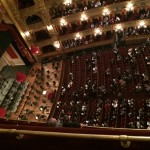 We visited this world famous opera house upon the recommendation of my friend, the guitarist Massimo Scattolin who has played in South America many times including at this gorgeous venue. Borges is said to have attended many concerts here and in June 2016, to mark the 30th anniversary since his death, the Teatro Colon opened a photography exhibition to “honor one of the greatest writers of history” curated by Amanda Ortega, head of Borges’s photographic and digital archive.
We visited this world famous opera house upon the recommendation of my friend, the guitarist Massimo Scattolin who has played in South America many times including at this gorgeous venue. Borges is said to have attended many concerts here and in June 2016, to mark the 30th anniversary since his death, the Teatro Colon opened a photography exhibition to “honor one of the greatest writers of history” curated by Amanda Ortega, head of Borges’s photographic and digital archive.
The Colon celebrated its 100th anniversary in 2008 and we were able to not only to see this resplendent venue but lucky enough to snap up tickets a few hours before concert time. Although they were the cheapest tickets available, once we found our way to ‘Paradise’ (‘Paraiso’ – the 7th and final seating level) the height did not compromise the famed acoustics as we listened to the Orquestra Filarmonica de Beunos Aires play a program of avantgarde composer Ge Gan-Ru, Tan Dun ( known for his scores for the movies Crouching Tiger, Hidden Dragon and Hero) and the ever popular late romantic period composer, Tchaikovsky.
PLAZA de MAYO
 Despite Borges’s bad politics (read an insightful essay by Clive James), he eventually came round to write about the The Disappeared – the systematic vanishing of those who spoke out against the miltary junta and who suddenly “disappeared,” either to prison with torture or to the grave – sometimes this included being thrown out of a helicopter over a local bay. Fear kept the nation quiet until the Mothers and Grandmothers of Plaza de Mayo who, motivated by family not politics, bravely broke the silence and empowered others to speak out about human rights abuses in the country. In the depths of the dictatorship, people formerly who criticized his silence, stopped Borges to thank him for his statements against the disappearances.
Despite Borges’s bad politics (read an insightful essay by Clive James), he eventually came round to write about the The Disappeared – the systematic vanishing of those who spoke out against the miltary junta and who suddenly “disappeared,” either to prison with torture or to the grave – sometimes this included being thrown out of a helicopter over a local bay. Fear kept the nation quiet until the Mothers and Grandmothers of Plaza de Mayo who, motivated by family not politics, bravely broke the silence and empowered others to speak out about human rights abuses in the country. In the depths of the dictatorship, people formerly who criticized his silence, stopped Borges to thank him for his statements against the disappearances.
We visited the Plaza de Mayo where the women meet every Thursday. Still demanding answers, still wearing the white scarves (based on clothe nappies that identified them to each other during the junta) and still gathering to commemorate the courage and long struggle that led to prosecutions and an uneasy closure in 2006.
OTHER THINGS WE DID IN THE COUNTRY OF BORGES
Argentina and Buenos Aires wasn’t all about Tracking down Borges but it was about exploring as much of his country and culture that we could fit into a few weeks. As well as San Telmo markets, the colourful houses and a visit to BOCA the home of football few other highlights were:
On the bo rder with Brazil, we stayed in a family Airbnb in the town of Iguazu and spent two days exploring one of the most magnificent, and the largest, waterfall in the world. A UNESCO World Heritage site, we walked alongside one of the 275 individual drops, took a boat ride into the falling waters and had to watch our food as the native coatis’s (similar to possums) jumped our tables. At times an OH&S challenge nonetheless simply spectacular and upon my return home was watching The Mission all over again.
rder with Brazil, we stayed in a family Airbnb in the town of Iguazu and spent two days exploring one of the most magnificent, and the largest, waterfall in the world. A UNESCO World Heritage site, we walked alongside one of the 275 individual drops, took a boat ride into the falling waters and had to watch our food as the native coatis’s (similar to possums) jumped our tables. At times an OH&S challenge nonetheless simply spectacular and upon my return home was watching The Mission all over again.
Floreria Atlantico (Arroyo 872, Retiro)
Set up b y a mixologist and a star sommelier it has been named the best bar in Latin America and number 10 on the list of the worlds best bars. Pass though an unassuming flower shop inhaling the gorgeous smells and enter the cool room before descending to a very fancy underground venue with an innovative twist on drinks and food. Bookings are tough, we waited a week, but you can also queue up (as we did for the second visit) and upon opening grab one of the 20 or so bar stools with full service. It’s worth it.
y a mixologist and a star sommelier it has been named the best bar in Latin America and number 10 on the list of the worlds best bars. Pass though an unassuming flower shop inhaling the gorgeous smells and enter the cool room before descending to a very fancy underground venue with an innovative twist on drinks and food. Bookings are tough, we waited a week, but you can also queue up (as we did for the second visit) and upon opening grab one of the 20 or so bar stools with full service. It’s worth it.
Tarquino Restaurant (1967 Rodriquez Pena)
Also accoladed through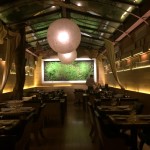 the roof, former El Bulli chef Dante Liporace deconstructs then reimagines the country’s classic dishes set in a beautiful almost magical space worthy of a Borges fan. We ate deconstructed pizza, soup balls that exploded in your mouth all accompanied by some of the best Malbecs in the country. My more adventurous and carnivorous friends experienced the famous “La Sequencia de la Vaca” (the Cow Sequence) – a head-to-toe tasting menu using all parts of the cow in a bold and innovative way.
the roof, former El Bulli chef Dante Liporace deconstructs then reimagines the country’s classic dishes set in a beautiful almost magical space worthy of a Borges fan. We ate deconstructed pizza, soup balls that exploded in your mouth all accompanied by some of the best Malbecs in the country. My more adventurous and carnivorous friends experienced the famous “La Sequencia de la Vaca” (the Cow Sequence) – a head-to-toe tasting menu using all parts of the cow in a bold and innovative way.
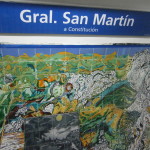 We even got our big girl pants on and caught the Subterráneo de Buenos Aires (aka Subte). It was a breeze. It cost a lot less than taxis, was faster, much more entertaining and more real – travelling with the locals. We loved the mosaics and murals in each station and the eclectic range of buskers who, with sometimes elaborate set ups, would unpack, start, finish and pack up again, with their performances timed perfectly between stations.
We even got our big girl pants on and caught the Subterráneo de Buenos Aires (aka Subte). It was a breeze. It cost a lot less than taxis, was faster, much more entertaining and more real – travelling with the locals. We loved the mosaics and murals in each station and the eclectic range of buskers who, with sometimes elaborate set ups, would unpack, start, finish and pack up again, with their performances timed perfectly between stations.
My stories are, in a sense, outside of me. I dream them, shape them, and set them down; after that, once sent out into the world, they belong to others.
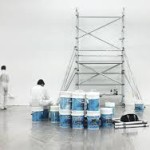 Latin American Art Museum of Buenos Aires has an impressive collection and we lucked out on a fabulous exhibition Experiencia Infinita featuring live works by eight artists described as ‘the most curatorially opportune artists of the moment’ including Dora García, Pierre Huyghe, and Judi Werthein. Entering the exhibition we came upon painters upon scaffolding, painting the walls as though setting up for an exhibition, but this was the exhibition. Almost about the gallery itself, or indeed, life in the 21st Century; being on show and exercising a kind of self critique.
Latin American Art Museum of Buenos Aires has an impressive collection and we lucked out on a fabulous exhibition Experiencia Infinita featuring live works by eight artists described as ‘the most curatorially opportune artists of the moment’ including Dora García, Pierre Huyghe, and Judi Werthein. Entering the exhibition we came upon painters upon scaffolding, painting the walls as though setting up for an exhibition, but this was the exhibition. Almost about the gallery itself, or indeed, life in the 21st Century; being on show and exercising a kind of self critique.
YO VOLVERE
I want to go back to Argentina, to Buenos Aires, and be able to tell you more about the music, the dance, the people and one of South America’s largest most diverse countries. I didn’t see the Glaciar Perito Moreno creeping two metres a day or the Inca ruins of El Shincal or the icy wilds of Patagonia and the vineyards of Mendoza. I didn’t go to a football game (we were told it was too dangerous for tourists). I didn’t talk enough about politics and history, or just stay somewhere quiet and get to know the local people. But I did see and experience a taste of Argentina and I did track down a little of Jean Luis Borges.
I hope my story and pictures excite you about Buenos Aires but mostly that they inspire you to read Borges. I invite you to tell me about Borges and you. (Scroll down a little further to find the comments section.)
*Borges and I by Jorge Luis Borges
The other one, the one called Borges, is the one things happen to. I walk through the streets of Buenos Aires and stop for a moment, perhaps mechanically now, to look at the arch of an entrance hall and the grillwork on the gate; I know of Borges from the mail and see his name on a list of professors or in a biographical dictionary. I like hourglasses, maps, eighteenth-century typography, the taste of coffee and the prose of Stevenson; he shares these preferences, but in a vain way that turns them into the attributes of an actor. It would be an exaggeration to say that ours is a hostile relationship; I live, let myself go on living, so that Borges may contrive his literature, and this literature justifies me. It is no effort for me to confess that he has achieved some valid pages, but those pages cannot save me, perhaps because what is good belongs to no one, not even to him, but rather to the language and to tradition. Besides, I am destined to perish, definitively, and only some instant of myself can survive in him. Little by little, I am giving over everything to him, though I am quite aware of his perverse custom of falsifying and magnifying things.
Spinoza knew that all things long to persist in their being; the stone eternally wants to be a stone and the tiger a tiger. I shall remain in Borges, not in myself (if it is true that I am someone), but I recognize myself less in his books than in many others or in the laborious strumming of a guitar. Years ago I tried to free myself from him and went from the mythologies of the suburbs to the games with time and infinity, but those games belong to Borges now and I shall have to imagine other things. Thus my life is a flight and I lose everything and everything belongs to oblivion, or to him. I do not know which of us has written this page.
SOURCES
Apart from the links in this piece, and I thank those creators, I also drew inspiration, ideas and information from the following:
The Aleph and Other Stories, 1933-1969, Dutton (New York, NY), 1970.
Jorge Luis Borges – Poetry Foundation
The Paris Review, Jorge Luis Borges, The Art of Fiction No. 39 by Ronald Christ 1967








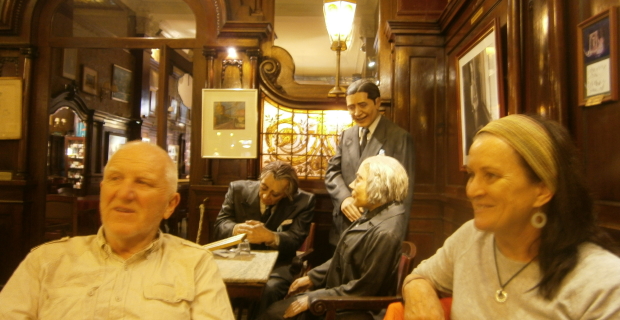

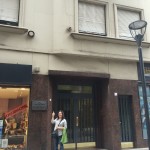
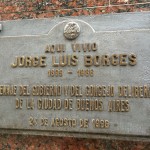
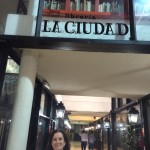
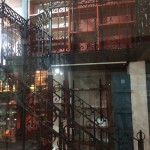




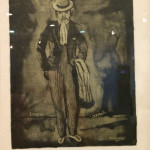

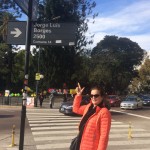
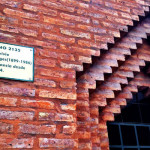
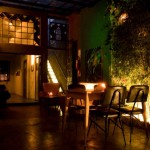
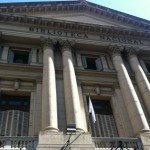

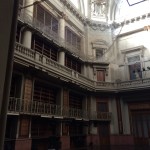
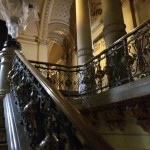
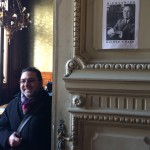
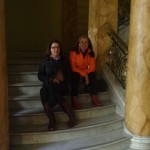
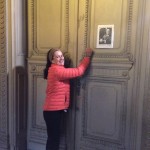
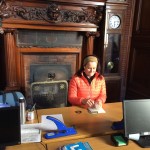
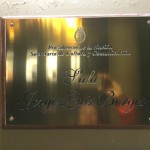




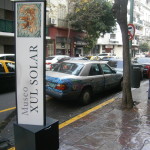
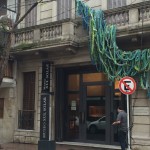
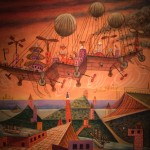
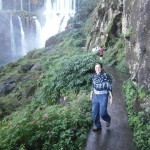

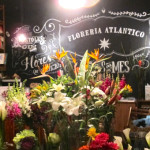
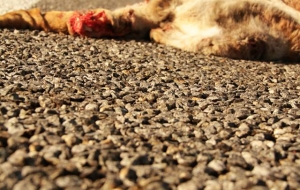
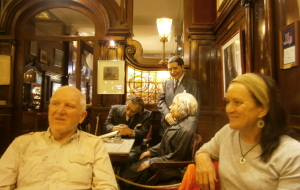
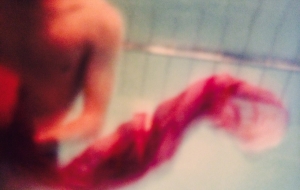
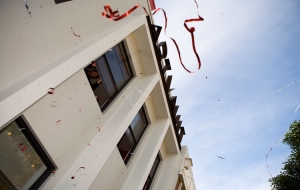

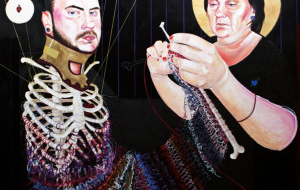
Great read and information for our upcoming trip. Thank you.
You are most welcome and I hope you have a great trip.
Well that’s just wonderful, Helen! You’ve inspired me to go back to Mythologies. Maybe one day I’ll go to Argentina too.